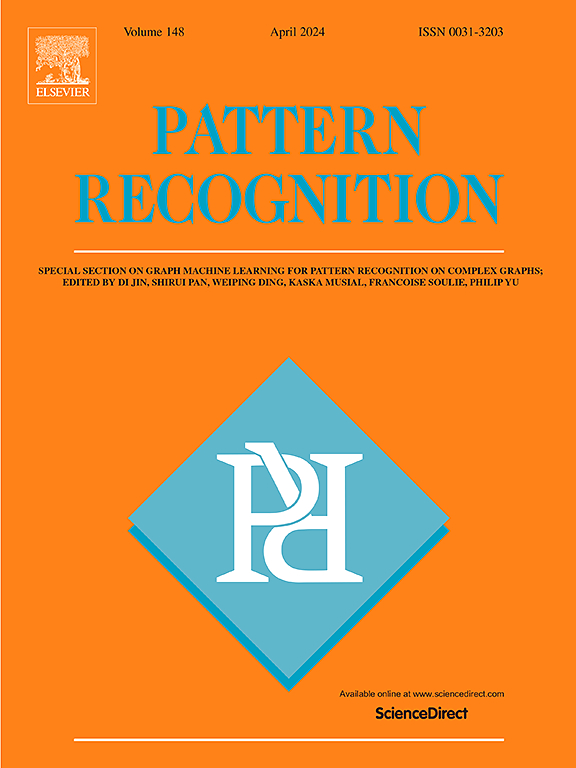AFPN: Alignment feature pyramid network for real-time semantic segmentation
IF 7.5
1区 计算机科学
Q1 COMPUTER SCIENCE, ARTIFICIAL INTELLIGENCE
引用次数: 0
Abstract
The structures of two pathways and the feature pyramid network (FPN) have achieved advanced performance in semantic segmentation. These two types of structures adopt different approaches to fuse low-level (shallow layer) spatial information and high-level (deep layer) semantic information. However, the segmentation results still lack local details due to the loss of information caused by simply fusing low-level feature details directly with multi-level deep features. To alleviate this problem, we propose an alignment feature pyramid network (AFPN) for real-time semantic segmentation. It can efficiently utilize both the low-level spatial information and high-level semantic information. Specifically, our AFPN consists of two components: the pooling enhancement attention block (PEAB) and the dual pooling alignment block (DPAB). The PEAB can effectively extract global information by using an aggregation pooling operation. The DPAB performs two types of pooling operations along the channel and spatial dimensions, reducing the differences between multi-scale feature maps. Extensive experiments show that AFPN achieves a better balance between accuracy and speed. On the Cityscapes, CamVid, and ADE20K datasets, AFPN achieves 78.75%, 79.24%, and 39.56% mIoU and the speed meets the real-time requirement. Our code can be available at the https://github.com/chongchongmao/AFPN.
面向实时语义分割的对齐特征金字塔网络
双路径结构和特征金字塔网络(FPN)在语义分割中取得了较好的效果。这两种结构采用不同的方式融合低级(浅层)空间信息和高级(深层)语义信息。然而,简单地将低层次特征细节与多层次深度特征直接融合会导致信息丢失,分割结果仍然缺乏局部细节。为了缓解这一问题,我们提出了一种用于实时语义分割的对齐特征金字塔网络(AFPN)。它既能有效利用低级空间信息,又能有效利用高级语义信息。具体来说,我们的AFPN由两个部分组成:池化增强注意块(PEAB)和双池化对齐块(DPAB)。PEAB可以通过使用聚合池操作有效地提取全局信息。DPAB沿着通道和空间维度执行两种类型的池化操作,减少了多尺度特征图之间的差异。大量的实验表明,AFPN在精度和速度之间取得了较好的平衡。在cityscape、CamVid和ADE20K数据集上,AFPN mIoU分别达到78.75%、79.24%和39.56%,速度满足实时性要求。我们的代码可以在https://github.com/chongchongmao/AFPN上获得。
本文章由计算机程序翻译,如有差异,请以英文原文为准。
求助全文
约1分钟内获得全文
求助全文
来源期刊

Pattern Recognition
工程技术-工程:电子与电气
CiteScore
14.40
自引率
16.20%
发文量
683
审稿时长
5.6 months
期刊介绍:
The field of Pattern Recognition is both mature and rapidly evolving, playing a crucial role in various related fields such as computer vision, image processing, text analysis, and neural networks. It closely intersects with machine learning and is being applied in emerging areas like biometrics, bioinformatics, multimedia data analysis, and data science. The journal Pattern Recognition, established half a century ago during the early days of computer science, has since grown significantly in scope and influence.
 求助内容:
求助内容: 应助结果提醒方式:
应助结果提醒方式:


